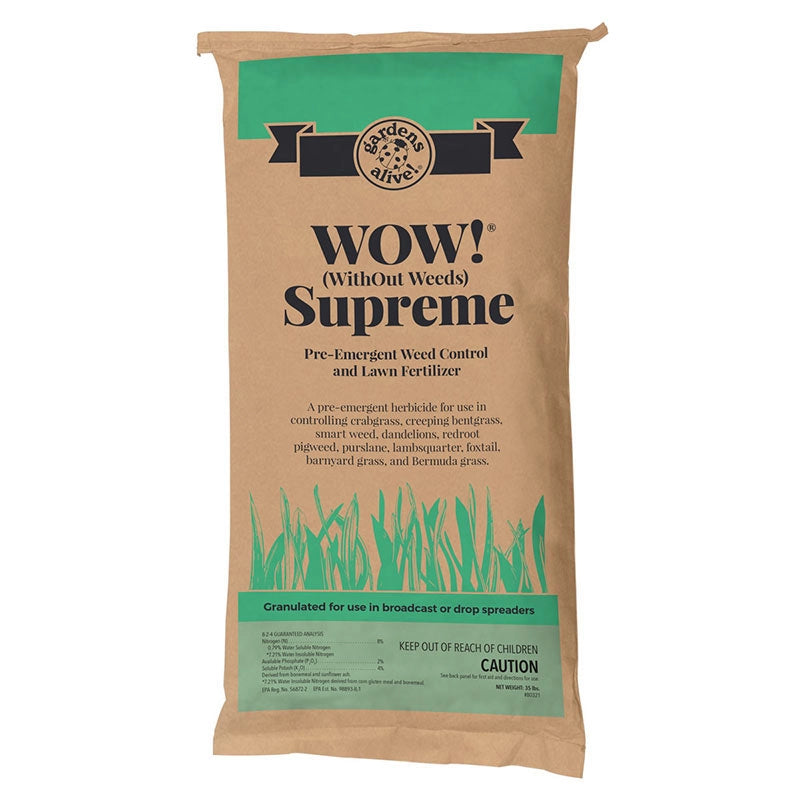The Secret Path to a Weed-free Lawn
Q. We received a VERY brief Gmail from Sheila {quote} ‘here in the Lehigh Valley’ that simply said “I heard you on WDIY (which is our presenting NPR station here in Bethlehem PA) on my way home from work, and I have a question on how to get rid of dandelions and weeds naturally from our lawn.”
Great fodder for a lawn care Q of the week, but extremely information-free; so I replied with a few of my basic lawn care questions and her responses made me realize that we were long overdue for a lawn care Q of the Week, She writes:
“The lawn is a pretty regular size for most houses in the area. It takes my husband two hours to cut both the front and back of the house using a corded electric human-powered push mower. He used to ‘weed and feed’ the grass a long time ago but stopped when we had kids. The lawn is mostly grass, but we see a lot of crab grass as well. Our neighbors treat their lawns but we don’t.”
God Bless the Children! Most people don’t think about the harmful effects of lawn chemicals on their own health, but when their kids and grandkids start crawling on the turf, many parents decide they’ll {quote} “put up with weeds” to have a safe place for the kids to play.
But ‘the dirty little secret of lawn care’ is that lawns don’t need to be ‘treated’, and there’s no reason to {quote}‘put up with weeds’. Weeds are the direct result of poor lawn care, not lack of toxic treatments. Follow a few simple rules and your lawn will look better than a treated lawn (not to mention that it’ll also be better for your health, soil life, birds, bees, pets and pollinators).
As I learned more about lawns over the years, I came to realize the importance of the turf being tall enough so that there was plenty of green to collect the solar energy needed for photosynthesis; and that THE biggest impediment to having a healthy, weed-free lawn is cutting the grass too short in the mistaken idea that you won’t have to mow as often.
Wrong. The cool-season grasses like bluegrass and fescue that predominate in most areas need to be between three and three-and-a-half inches tall AFTER CUTTING to thrive. It’s simple logic—grass is a plant. Plants rely on their leaves to process sunlight for energy. Remove too much of their green and they go into shock. Instead of growing at a nice slow pace, they push all their remaining energy into sending up shoots in a manic attempt to catch as much sunlight as possible; and because the new growth is scattered and uneven, the lawn looks ratty.
The lawn owner notes the ratty look and figures the lawn should be cut again; and maybe this time they should cut it shorter. And so they spend the summer blowing dirt out the back of their mower trying to kill their grass, making it so weak that bare patches show up, and because the exhausted lawn hasn’t had any energy to devote to the root growth that would otherwise crowd them out, weeds move in.
Raise the cutting height on your mower to what will probably be its highest setting and your lawn will have enough green left after cutting to finally have some energy to spend on root growth. The deeper and healthier your roots, the less room there is for weeds to gain a foothold. A properly maintained lawn will crowd out weeds on its own, and it will grow at the slowest possible rate because it is no longer in a blind panic.
And the best way to achieve and maintain that height is with a mulching mower. Grass blades are ten percent nitrogen. The perfect lawn fertilizer is ten percent nitrogen. Mulching mowers have no exit hole to shoot the clippings out the side or bag them up. Instead, the clippings are trapped inside a sealed deck, where super-sharp blades constantly cut and re-cut them until they drop back into the lawn in virtually invisible pulverized form, feeding your turf with the most natural food possible in the perfect amount every time you cut.
Which brings us to the second crucial aspect of responsible mowing: A sharp blade. A sharp blade makes a nice clean cut that heals quickly to retain water. A dull blade rips and shreds the grass blades, making them unable to hold water. The best investment you can make for your lawn is to buy a new blade every season or have the old one sharpened. (If you’re replacing, wrap the old blade in duct tape and recycle it with your metal cans and such.)
And that’s it. After a full season of cutting at the correct height (never shorter than three inches) with a sharp blade, your lawn will be a true sea of green; and your weeds will slowly disappear, without you ever directly having to deal with them.
And for the impatient among you, I will reveal how to greatly reduce existing weeds like dandelion and crabgrass this season—when I see you again…next week…


